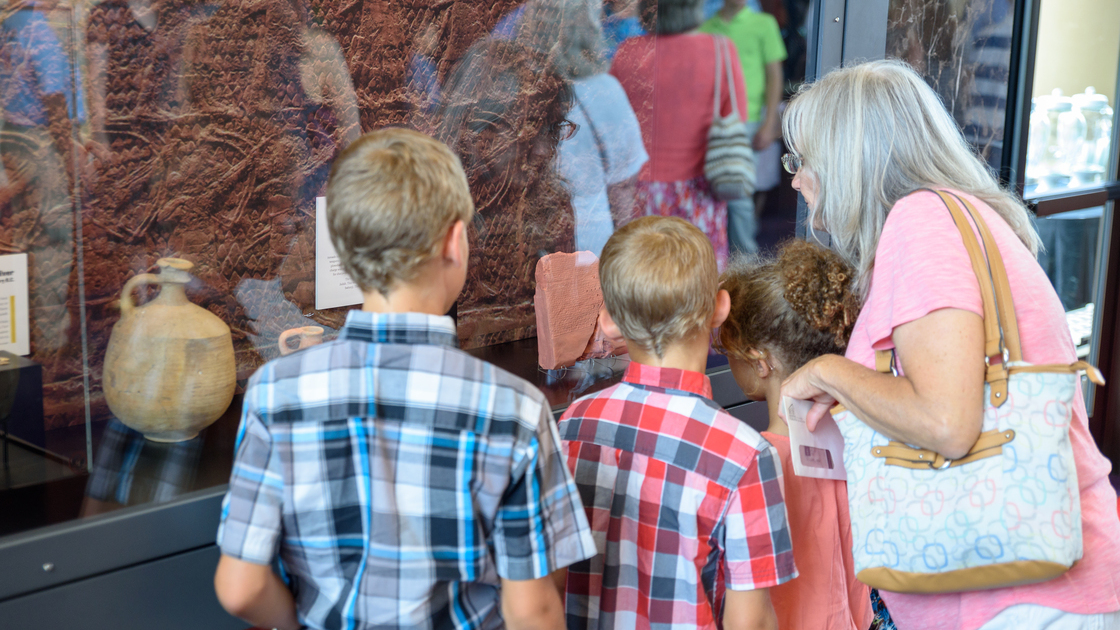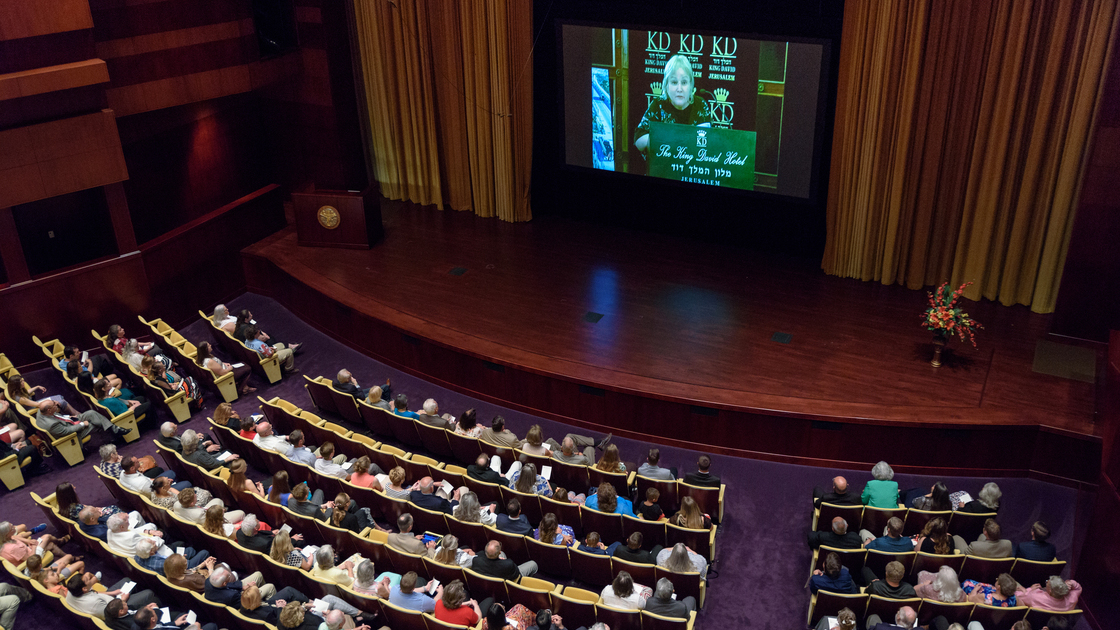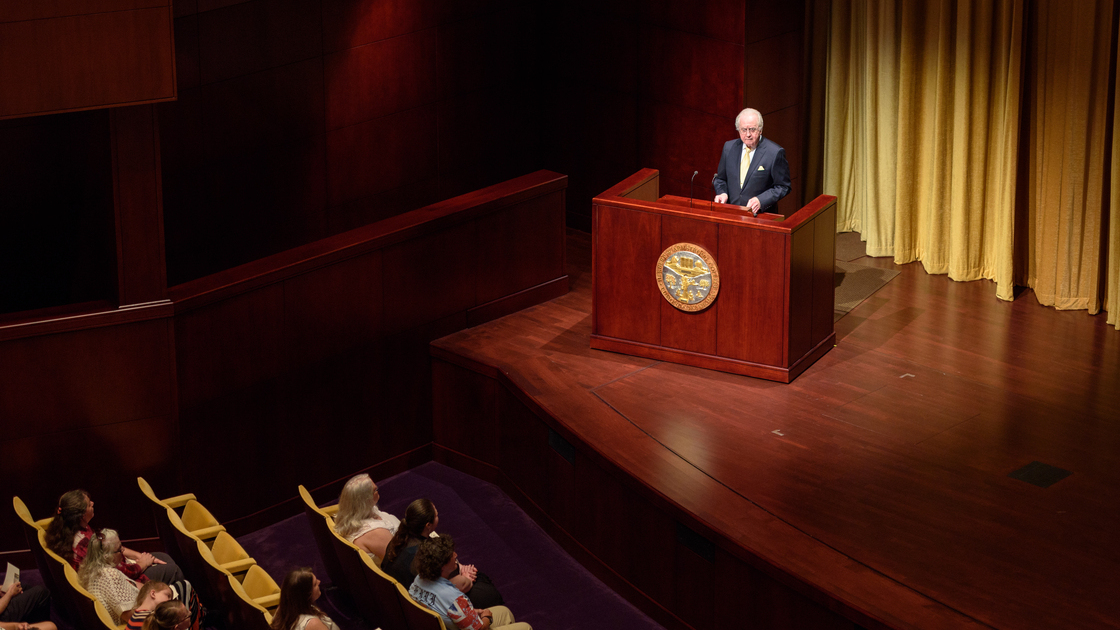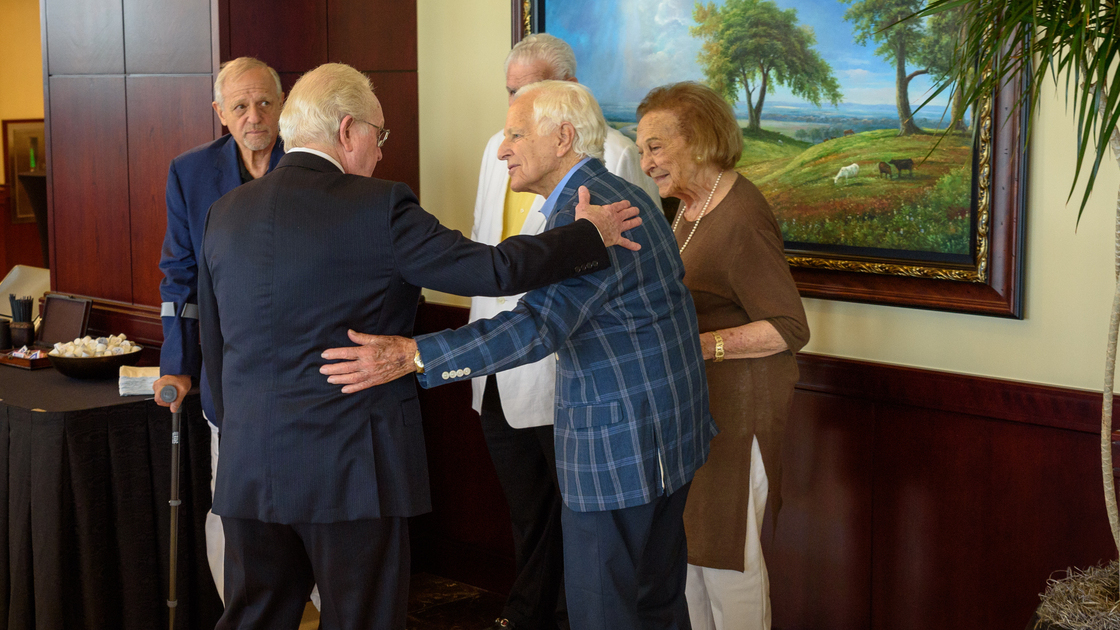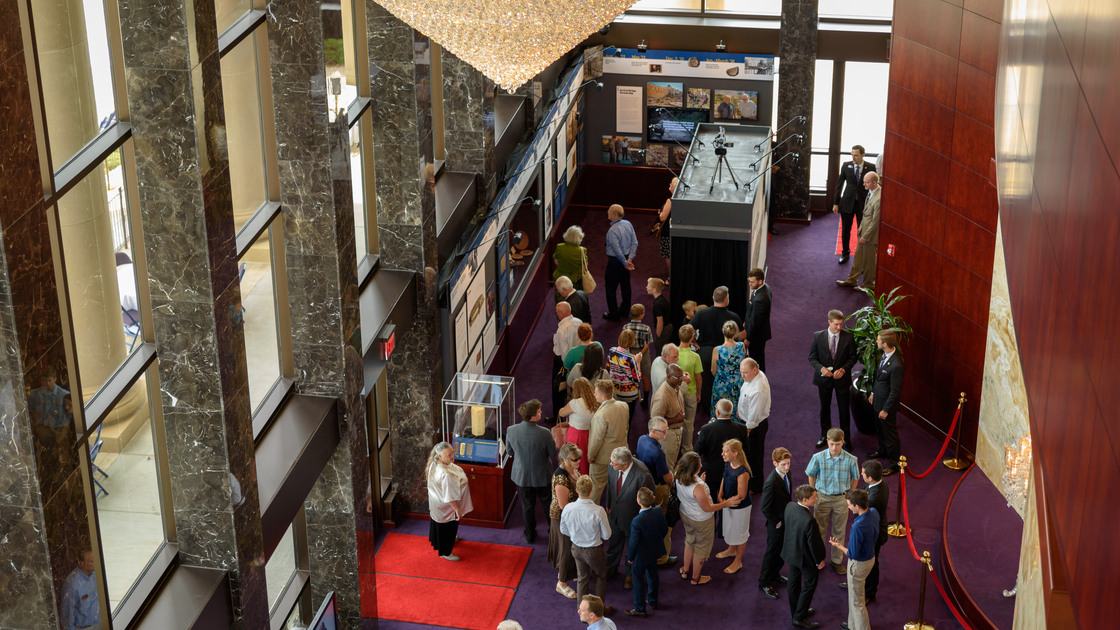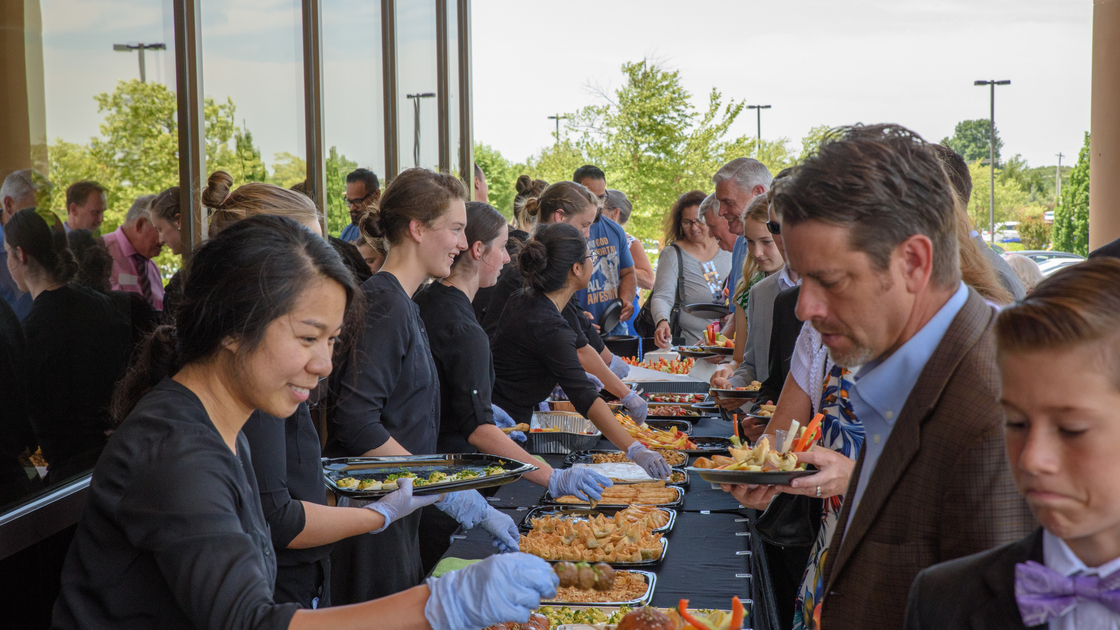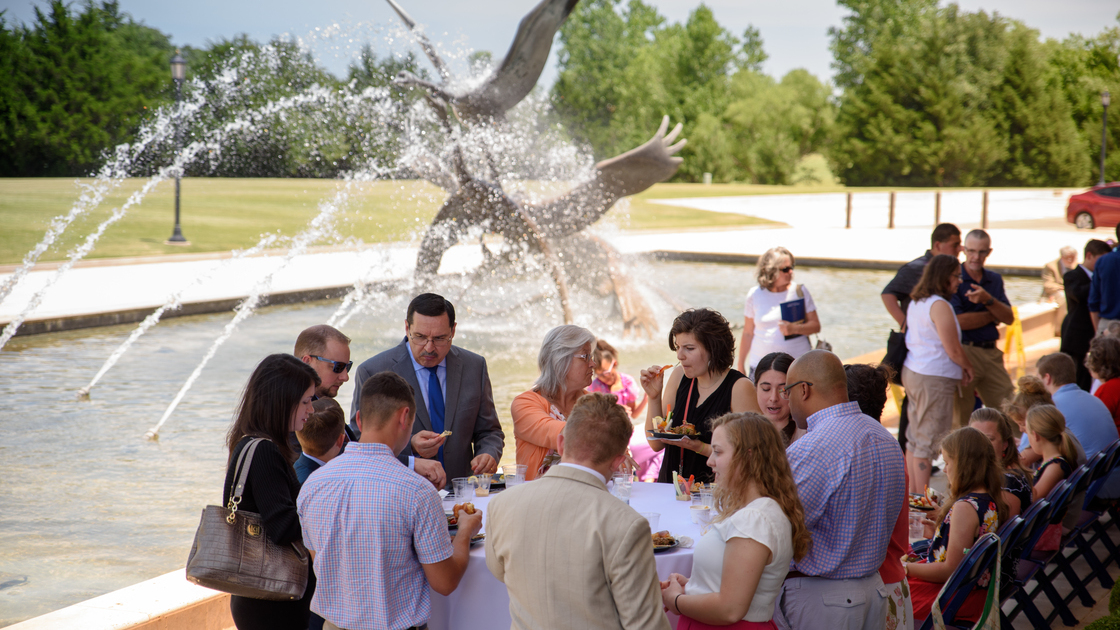EDMOND—Hundreds of guests attended the opening event for Seals of Isaiah and King Hezekiah Discovered on June 10 at Armstrong Auditorium. The archaeological exhibit includes small clay seal impressions (bullae) originally belonging to King Hezekiah and, undoubtedly, the Prophet Isaiah, two men who the Bible records as working together in a successful appeal to God to miraculously save the city of Jerusalem from Assyrian forces. The exhibit also includes 36 other artifacts relating to the 8th-century b.c. Assyrian invasion of Judah and besiegement of its capital city.
Just after 11 a.m. (Central Time), the event began at Armstrong Auditorium in Edmond, Oklahoma, where an estimated 500 people connected via videoconference with 80 people at the King David Hotel in Jerusalem. The event also streamed live to 1,454 devices connected to WatchJerusalem.co.il or to live.pcog.org.
From Jerusalem, foundation vice president Stephen Flurry introduced the event and the three speakers for the evening. The crowds first heard an address from Jerusalem by Dr. Michael Oren, a former ambassador of Israel to the United States and current member of the Knesset and a deputy minister in the Prime Minister’s Office. Dr. Oren’s seven-minute talk emphasized the important and controversial nature of archaeology, praised Dr. Mazar’s willingness to present her archaeological finds as proof of the Bible’s validity. “These seals,” he said, “beside the scientific contribution, beside the great contribution it makes to [the State of Israel’s] legitimate validity, once again reinforce these historic and unbreakable spiritual ties between Israel and the Jewish state.” He added that archaeology is important not only for revealing the past, but for ensuring the future of Israel.
From Jerusalem, Hebrew University archaeologist Eilat Mazar then spoke for 13 minutes, largely about the history of how her and her grandfather’s excavations have been supported by educator Herbert W. Armstrong and the Armstrong International Cultural Foundation. Mr. Armstrong sent funds and students from Ambassador College to support the archaeological work of Hebrew University Professor Benjamin Mazar from 1968–1978. The Armstrong International Cultural Foundation has supported Dr. Eilat Mazar’s work since 2006. Dr. Mazar expressed appreciation for Mr. Armstrong and Armstrong International Cultural Foundation chairman Gerald Flurry’s financial and moral support for her work and the work of her grandfather.
Dr. Mazar then discussed the Isaiah and Hezekiah seal impressions, their discovery only two meters apart from each other in the same layer and historical context, and how they prove the accuracy of the Bible. She concluded by stating that each person must choose for himself whether or not to believe that these finds prove details of Bible history. She said she hopes to find more seal impressions and more definitive proof. “Until then, I would like to thank you all for everything we have got so far,” she said, before concluding with a quotation of Isaiah 2:3.
The ceremony continued with the foundation’s video, “Celebrating 50 Years of Partnership,” which highlighted the relationship between Professor Mazar, Herbert W. Armstrong and Ambassador College, and now Dr. Mazar, Mr. Flurry and Herbert W. Armstrong College.
Mr. Flurry then delivered a 26-minute address, praising Dr. Mazar and her work. He then focused on letting the “stones of Hezekiah and Isaiah speak,” saying that the discovery of the clay seal impressions not only proved Bible history but showed how a king working with a prophet could result in miracles. “The reason this one is so much more fascinating, I think, than some of the others is that this you have a king-prophet relationship,” Mr. Flurry said. “You really have these two men teamed together and it’s really the greatest partnership of king-prophet since King David and Samuel.”
Mr. Flurry drew attention to the Bible history of Hezekiah being punished because he did not follow the advice God gave him through the Prophet Isaiah, but then surviving and succeeding when he submitted to God’s direction through Isaiah. He then encouraged the guests to examine the “phenomenal” exhibit in the auditorium lobby. Mr. Flurry later said that members told him his message “captured the spirit of the event.”
Cultural foundation representative Brent Nagtegaal said in an e-mail, “It was exciting to hear Mr. Flurry’s voice echoing through the halls of King David Hotel, a place Mr. Armstrong stayed often during his visits to Israel. It was also positive to see Mr. Flurry’s message so well received by a number of Israelis in attendance. Many stayed to mingle and talk for a full hour after the presentation.”
Guests in Edmond then toured the exhibit, which includes three dozen artifacts on loan from the Israel Antiquities Authority that relate to life in the 8th-century b.c. Kingdom of Judah as it was invaded by the Assyrian Empire: the bullae of King Hezekiah and Isaiah, iron arrowheads, flint slingstones, royal seal impressions stamped on pottery handles, a pym weight and two-shekel weight, silver fragments used as currency, a lamp, a decanter, juglets, jars and bowls.
The exhibit also includes several replicas, including a 12-foot-long replica of Hezekiah’s Tunnel (Siloam Tunnel), a 1,814-foot water channel that the king’s servants cut through rock beneath the City of David to connect the Gihon Spring with the Pool of Siloam.
As some toured the exhibit, others ate hors d’oeuvres beneath the auditorium portico and dessert in the lobby balcony. Those milling in and around the building included 391 members of the Philadelphia Church of God, which sponsors the Armstrong International Cultural Foundation, and 80 others who traveled from the local community and from out of state to see the exhibit. The event was staffed by 70 Herbert W. Armstrong College students, alumni and volunteers.
Two guests drove from Florida specifically to see the exhibit. Another guest from Wichita, Kansas, commented, “You see in the pages all the things that archaeologists are digging up. To see them firsthand is a different experience …. It’s amazing how it brings the Bible to life.”
Another visitor said the exhibit far exceeded his expectations and that he was honored to see it, adding, “If you’re curious at all about historical aspects of the Bible, if you have any doubt about that, come here and I think it will put your mystery to end.”
Another visitor wrote to Mr. Flurry, saying, “It was a supreme privilege and pleasure … to share your informative and enlightening program. What you have made possible with the Armstrong International Cultural Foundation is truly inspiring.”
Mr. Flurry said, “Of course, we know that God did all of this, and we are honored to play a small role in it.”
pcg members also shared their reactions to the exhibit opening, including Sharon Helms, who visited from Missouri. She wrote in an e-mail, “The opening ceremony was very exciting due in part to the simultaneous streaming from Jerusalem to Edmond and Edmond to Jerusalem. The lunch far exceeded my expectations!”
Edmond member Maria Larsen said that the example of how God miraculously intervened for King Hezekiah was something “we can apply in our lives today.”
Mr. Gerald Flurry said, “This exhibit is about our work in Jerusalem. God is building our imaginations to better comprehend our future in this magnificent city.”
Mr. Flurry offered the exhibit brochure on his June 10 Key of David television program, “How the Seals of Isaiah and Hezekiah Speak.”
Since the exhibit opened, headquarters staff members and Herbert W. Armstrong College students have provided complementary guided tours to hundreds of people. Group tours have included a local Jewish organization and a senior community. After opening day, the exhibit has attracted 429 visitors from the community and 22 visitors who are pcgmembers. The exhibit continues through August 19.
Seals of Isaiah and King Hezekiah Artifacts
Among the exhibit’s 38 total artifacts are:
· The bulla of King Hezekiah (Jerusalem)
· The bulla of Isaiah [the Prophet] (Jerusalem)
· Iron arrowheads (Tel Lachish)
· Flint slingstones (Tel Lachish)
· Clay eating vessels (Tel Beersheba and Tel Lachish)
· Vessel handles embossed with royal seals (Tel Beersheba)
· Hacksilver (Dor)
